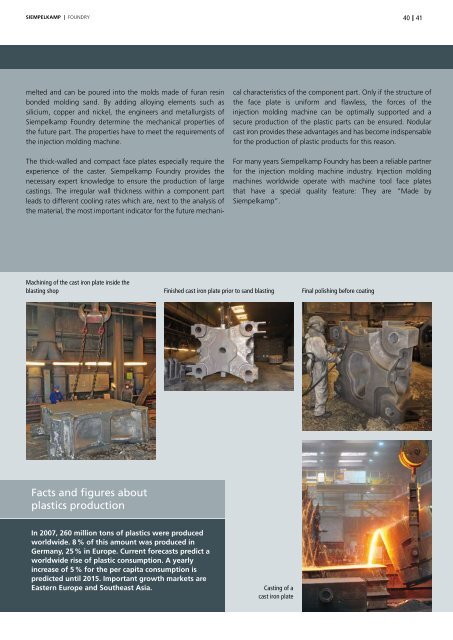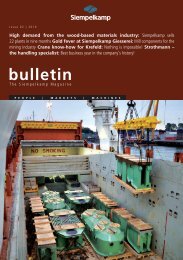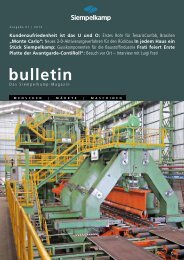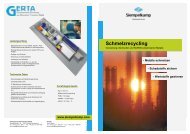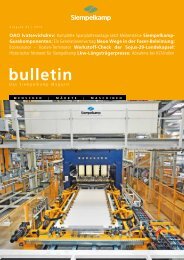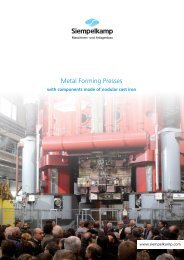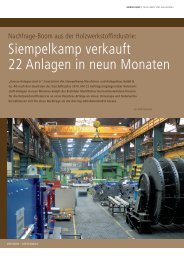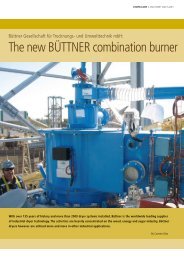Bulletin 1/2011 - Siempelkamp
Bulletin 1/2011 - Siempelkamp
Bulletin 1/2011 - Siempelkamp
You also want an ePaper? Increase the reach of your titles
YUMPU automatically turns print PDFs into web optimized ePapers that Google loves.
SieMpelkaMp | FOUnDRy<br />
melted and can be poured into the molds made of furan resin<br />
bonded molding sand. By adding alloying elements such as<br />
silicium, copper and nickel, the engineers and metallurgists of<br />
<strong>Siempelkamp</strong> Foundry determine the mechanical properties of<br />
the future part. the properties have to meet the requirements of<br />
the injection molding machine.<br />
the thick-walled and compact face plates especially require the<br />
experience of the caster. <strong>Siempelkamp</strong> Foundry provides the<br />
necessary expert knowledge to ensure the production of large<br />
castings. the irregular wall thickness within a component part<br />
leads to different cooling rates which are, next to the analysis of<br />
the material, the most important indicator for the future mechani-<br />
cal characteristics of the component part. Only if the structure of<br />
the face plate is uniform and flawless, the forces of the<br />
injection molding machine can be optimally supported and a<br />
secure production of the plastic parts can be ensured. nodular<br />
cast iron provides these advantages and has become indispensable<br />
for the production of plastic products for this reason.<br />
For many years <strong>Siempelkamp</strong> Foundry has been a reliable partner<br />
for the injection molding machine industry. Injection molding<br />
machines worldwide operate with machine tool face plates<br />
that have a special quality feature: they are “Made by<br />
<strong>Siempelkamp</strong>”.<br />
Machining of the cast iron plate inside the<br />
blasting shop Finished cast iron plate prior to sand blasting Final polishing before coating<br />
Facts and figures about<br />
plastics production<br />
In 2007, 260 million tons of plastics were produced<br />
worldwide. 8 % of this amount was produced in<br />
Germany, 25 % in Europe. Current forecasts predict a<br />
worldwide rise of plastic consumption. A yearly<br />
increase of 5 % for the per capita consumption is<br />
predicted until 2015. Important growth markets are<br />
Eastern Europe and Southeast Asia.<br />
Casting of a<br />
cast iron plate<br />
40<br />
41


